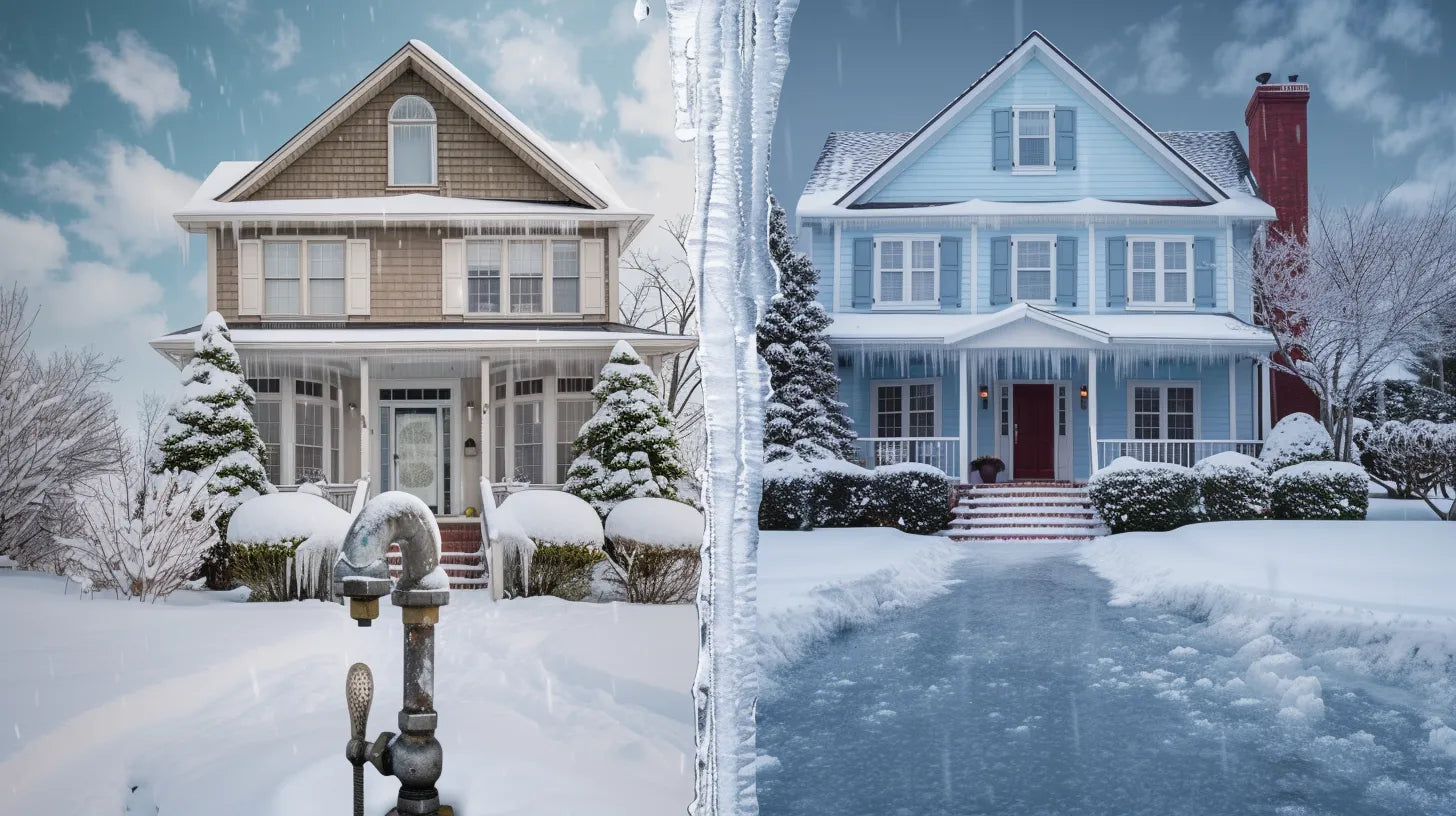As temperatures begin to plummet, the risk of outdoor faucets freezing and potentially bursting becomes a significant concern for homeowners. The consequences of such an occurrence are not only inconvenient but can also lead to costly repairs.
To mitigate these risks, a comprehensive approach involving several preventative measures is essential. These strategies range from the installation of frost-proof faucets to the application of simple insulation techniques. Furthermore, understanding the importance of timely hose disconnection and the benefits of regular maintenance checks cannot be overstated.
However, the effectiveness of these measures is contingent upon their timely and correct implementation. As we explore these preventative strategies in greater detail, it becomes clear that safeguarding your outdoor faucets from the ravages of freezing temperatures requires more than just a cursory effort.
Understanding Faucet Freeze Risks
Why is it vital to comprehend the risks associated with outdoor faucet freezing, and how can we mitigate these risks effectively?
When outdoor faucets freeze, the expanding ice can cause pipes to burst, leading to significant water damage. Understanding the risks and prevention strategies is crucial to avoid costly repairs.
Frost-proof faucets offer enhanced protection by eliminating the need for extensive winterizing, requiring only the removal of attached hoses. However, in areas experiencing freezing temperatures, particularly during the first freeze or a hard freeze, additional steps are necessary.
To prevent outdoor faucets from freezing, shutting off the water supply and draining residual water are essential measures. Installing insulated faucet covers can further protect against freezing by trapping heat from the house. Regular testing of the faucet and ensuring a proper seal between the faucet flange and the house wall are also key to preventing freezing and subsequent damage.
For those seeking alternative methods, installing a cutoff valve inside the house, using frost-proof spigots, or adding heat tape inside the covers can offer additional protection against the risks of freezing temperatures.
Disconnect Hoses Early

A crucial preventative measure in safeguarding outdoor faucets against freezing temperatures involves the early disconnection of hoses in the fall. This simple yet effective step ensures that water does not remain in the line, thereby reducing the risk of the pipes bursting in cold weather. By disconnecting hoses early, homeowners can facilitate the proper drainage of any remaining water in the pipes, significantly diminishing the potential for damage to the outdoor faucets during the winter months.
Moreover, the early removal of garden hoses prevents unexpected water spray incidents inside or outside the house when the outside faucet is used again in the spring. This precaution, in conjunction with installing faucet covers, amplifies protection against the freezing conditions typical of the cold season.
Disconnecting hoses early is a straightforward preventive measure that can save homeowners time, money, and frustration, ensuring that their outdoor faucets remain functional throughout the year.
Install Frost-Proof Faucets

Moving beyond simple disconnection and covering practices, installing frost-proof faucets offers a more permanent solution to preventing outdoor faucets from freezing during the cold months. Frost-proof faucets, also known as freeze-proof or frost-free hose bibs, are designed with a unique mechanism that includes a long rod extending into the home. This design feature significantly reduces the chance of water remaining in the exposed section of the faucet, making freezing almost impossible.
The installation of frost-proof faucets directly onto your home's water supply pipe replaces the standard outdoor faucet and eliminates the routine winterization process, except for the removal of any attached hoses. These specialized faucets ensure that the water supply is shut off deep within the building, allowing any remaining water in the pipe to drain out, effectively preventing the spigot from freezing.
Considering the complexity and necessity of a secure connection to the plumbing system, it is recommended to have a professional or an experienced DIYer perform the installation. This ensures both the effective prevention of water freezing in the pipe and the longevity of the frost-proof faucet's performance.
Apply Insulation Techniques

To safeguard outdoor faucets from the harsh winter conditions, applying insulation techniques serves as an essential preventative measure. With temperatures capable of dropping below 59°F, the risk of water in pipes freezing and expanding increases, potentially leading to frozen pipes and significant damage. Protecting the supply pipe leading to hose bibs is crucial for preventing such scenarios.
- Use insulated faucet covers to trap heat and prevent freezing, especially when combined with draining the pipes.
- Install insulation for each faucet before winter, utilizing outdoor faucet covers available in Styrofoam and insulated cloth sacks.
Check the effectiveness of outdoor foam faucet covers, which may be more suitable for areas with milder winters.
Consider alternative methods to prevent freezing, such as installing a cutoff valve with a relief valve, using frost spigots, or adding heat inside the covers.
Recognize the limitations of foam faucet covers, understanding that insulation is not 100% effective, and they may not be suitable for prolonged cold winters.
Regular Maintenance Checks

Regular maintenance checks are pivotal for ensuring the longevity and functionality of outdoor faucets, especially in preparation for the colder months. Conducting these checks is key to preventing a frozen faucet, which can lead to significant damage both outside and inside your home. By making sure your outdoor plumbing is in top condition, you not only safeguard your faucets but also avoid the potential need for costly repairs.
If you notice any signs of wear or damage during these checks, it's crucial to address them promptly. For tasks beyond simple inspections or if you need help winterizing your outdoor plumbing, don't hesitate to call your local professional. Scheduling an annual maintenance visit is a sure way to catch any issues early and keep your outdoor faucets from freezing, ensuring they're ready to withstand the winter months.










